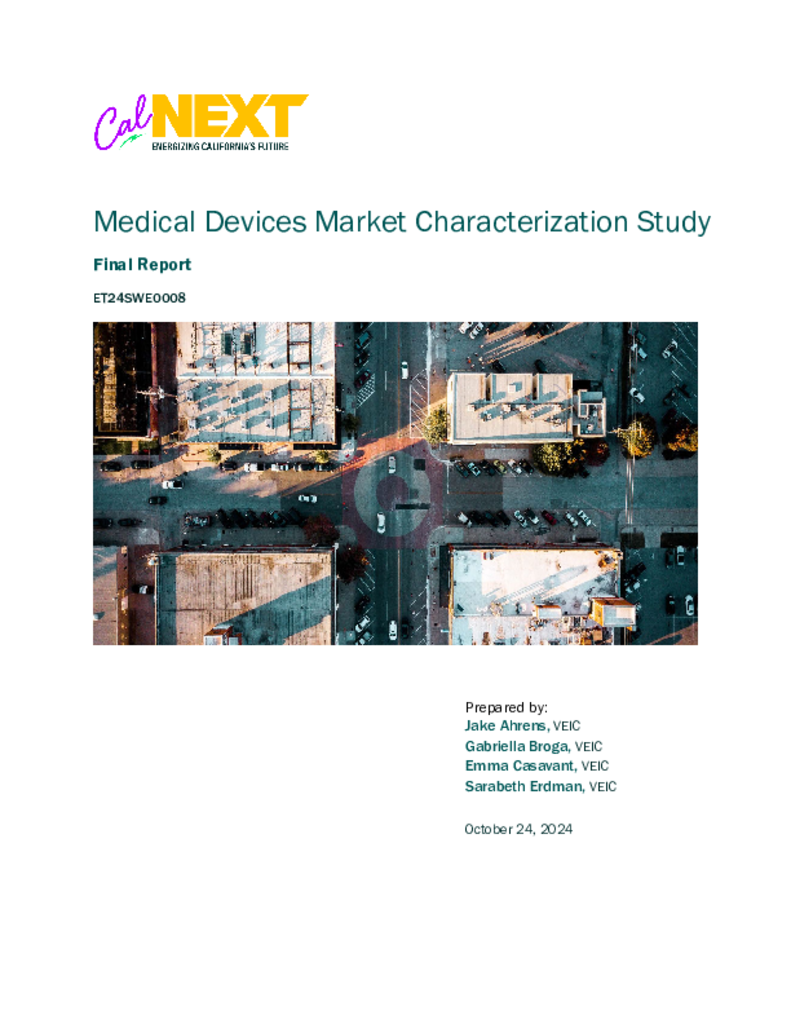ET24SWE0008 - Medical Devices Market Characterization Study
VEIC proposes a market study of energy efficiency for medical devices. The market study will quantify the potential for energy savings, identify device types with opportunity for higher efficiency, define the mechanisms for achieving higher efficiency, and recommend efforts for achieving higher energy efficiency and energy savings in the CA market.
Medical device manufacturers play a direct role in the provision of higher efficiency devices. New devices are developed and sold to meet the operational requirements of the end users. Some residential medical devices have remote monitoring capabilities for tracking device effectiveness and usage, which may also enable better energy management. This project will investigate both the energy management capabilities in development by manufacturers, and the energy management needs of healthcare personnel, to inform efforts by California hospitals, regulators, insurance companies, and utility programs to obtain the best available technology and practices in the marketplace.
The influence of hospital regulations and accreditation requirements on the energy use of medical devices may be significant but is currently unclear in the context of energy management barriers and opportunities. Healthcare facilities in California are subject to regulation by the state and accreditation by the Joint Commission. An operational culture of “always ready” is common in hospitals, is associated with regulatory requirements, and is influential on energy consumption. This project will investigate the regulatory barriers and opportunities for operating medical devices in lower (non-active) power modes.
The efficient operation of residential and healthcare facility medical devices is complicated by the diversity of equipment types, makes/models, and use cases. A significant barrier to operating medical devices efficiently is the accessibility of operating instructions for the setup and use of lower-power modes. The effort required to find the necessary information is typically more than individual users have the time or motivation to research, and the benefit of finding the information is not shared broadly among many users. This research will prototype a database of power management instructions for major categories of medical devices to reduce the barrier of information accessibility. The database will be designed for direct access by the public and for use as guidance in identification and quantification of low/no cost EEMs (energy efficiency measures) in utility supported energy audits, retro-commissioning studies, and SEM (strategic energy management) programs.
The research team will engage stakeholders in medical device manufacturing and sales, the NREL Plug and Process Team, the U.S. Department of Energy ENERGY STAR program, health care facility operation, medical insurance administration, and efficiency program administration to inform the findings and recommendations. The study will address opportunities for medical devices used in a household setting and medical devices use in a healthcare facility setting.

